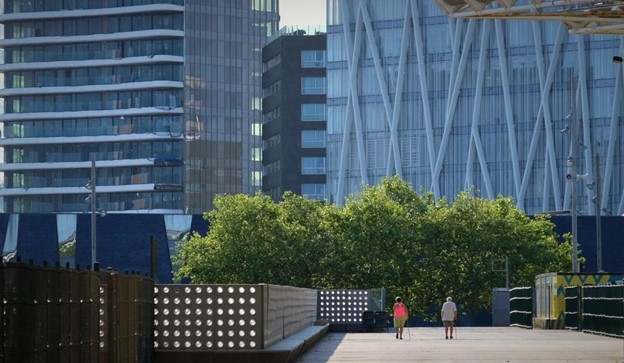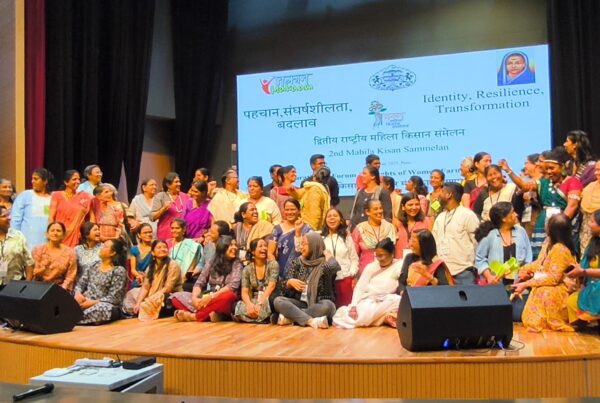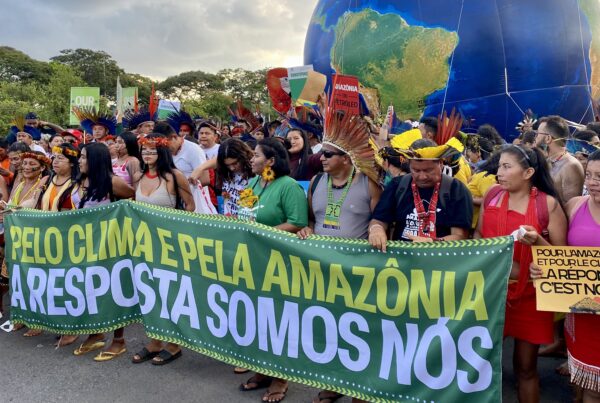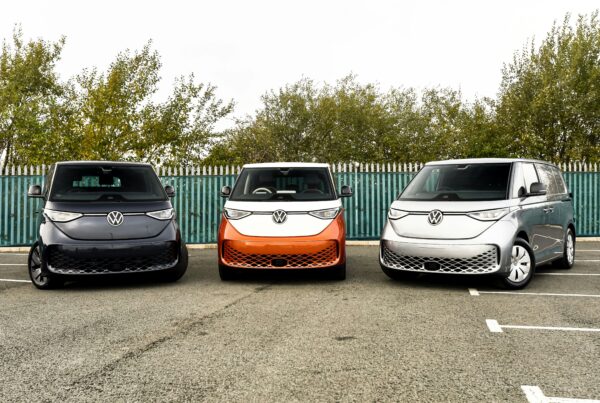By Emilia Oscilowicz
A new short documentary shot and edited by filmmaker Alberto Bougleux sheds light on the dilemmas of greening cities.
Editors’ note: This post forms part of the series “Green inequalities in the city”, developed in collaboration with the Barclona Lab for Urban Environmental Justice’s Green Inequalities blog. The series seeks to highlight new research and reflections on the linkages between the dominant forms of “green” redevelopments taking place in cities and questions of urban environmental justice, and the challenges and possibilities these imply for more just and ecological urban spaces.
Barcelona has a reputation for being one of Europe’s most attractive and liveable cities. Known for its progressive urban planning measures including the widely celebrated car-free superblocks model in recent years, the city continues to consolidate its trajectory by making neighborhood revitalization, climate adaptation, and the creation of green, public spaces a priority. Although this new urban model sounds ideal, a closer look reveals problematic trends. While new parks, street re-designs and traffic-calming initiatives in certain areas have driven prices up and many locals out due to gentrification, other areas still lack green spaces altogether. As a result, residents are fighting to make their neighborhoods both green and socially just.
Though the current COVID-19 pandemic has drastically reduced the number of visitors to Barcelona, gentrification continues to be a hot button issue between residents and local municipal policy makers as they wrestle with questions about who benefits from green space and what the future of many vacant lots or buildings will be in a post-pandemic world. To Green or Not To Green: Four Stories of Urban (In)Justice in Barcelona, showcases four stories of neighbourhood struggles against urban inequality in Barcelona, tracing how civic groups are mobilising to demand better air quality, safe housing conditions, and access to health care facilities—all in relation to green space. The documentary addresses how issues of wealth, class, race, and unequal access to environmental amenities manifest in a city that has historically grown around a tourism and tech-based economy.
La Fira
In February 2019, The Montjuic Fira de Barcelona—the city’s international fairground decided without public consultation to renew its contract, effectively prioritising the spending of 380 million euros on tourism and large events over an alternative use of existing buildings and spaces. In response, local citizens mobilized to create a platform called “La Fira o la Vida”, which proposes the development of a new neighborhood with green space and social housing that would benefit local residents. Debates regarding what will come of la Fira continue and future planning decisions of the fairground remain unknown.
El Raval
El Raval in Barcelona’s Old Town is characterized by its economic, cultural, and social diversity. Tourism-centered revitalization and land use conversion has had a profound effect on its marginalized, multicultural communities. After years of talks regarding the development of a new healthcare centre in the neighborhood in the Capella de la Misericòrdia, the City of Barcelona instead granted the space to become an extension of the touristic cultural center, MACBA , in 2018. Outraged, neighbors and healthcare workers occupied the space in 2019 and organized protests in response to the ignored needs of residents. Since the protests, the contract with MACBA has been terminated but the planning and construction of the new healthcare still have not moved forward.
Tres Turons
The northern neighborhood of El Carmel is home to some of the last row houses in Barcelona self-constructed by immigrants in the 20s-30s and again after World War II. Despite their deep significance in terms of local heritage and cultural memory for residents, the City of Barcelona has proposed a large central park that connects three vantage points in the neighborhood as means to decentralize tourism and provide more green space to the city as a whole. In response, residents have mobilized and called upon the media to make direct contact with the City in an effort to preserve the homes and plan an alternative development of the park. Residents express major distress over the eviction and displacement of residents as well as the impending intensification of property costs as the park project materializes.
Poblenou
The post-industrial neighborhood of Poblenou has undergone a major urban transformation under the 2020 22@ Plan, intended to promote new tech and startup economies. As part of this plan, the City launched here its pilot superblocks project which reroutes traffic around 3×3 blocks to create pockets of urban green spaces within them. Both the 22@ plan and the superblocks plan have caused acute speculation and displacement—traditional professions and small shops have closed, neighbors leave as they can no longer afford rent, and the promise of high-paying jobs has instead materialised as low-wage call-center or service jobs. Neighbors have mobilized to create the Ens Plantem civic platform to call for more public housing and a departure from the tech-model economy now under threat due to the rise of COVID-19 work-from-home mandates.
These four cases of urban injustice demonstrate the web of social and green tensions that emerge from a development model centered since the 1990s primarily on tourism and technology. The revitalization of many neighborhoods has displaced residents, severed community ties, and left communities without basic services or amenities. New green spaces tend to benefit visitors or newcomers rather than local residents. While the outcomes of many of these manifestations of injustice remain unknown, activists and residents have continuously demonstrated that they will keep fighting for a Barcelona that is both green and equitable.
—
Emilia Oscilowicz is a Canadian Mitacs-funded researcher whose research focuses on the intersection of green gentrification, healthy public spaces, and just cities for children and families.







13 Comments